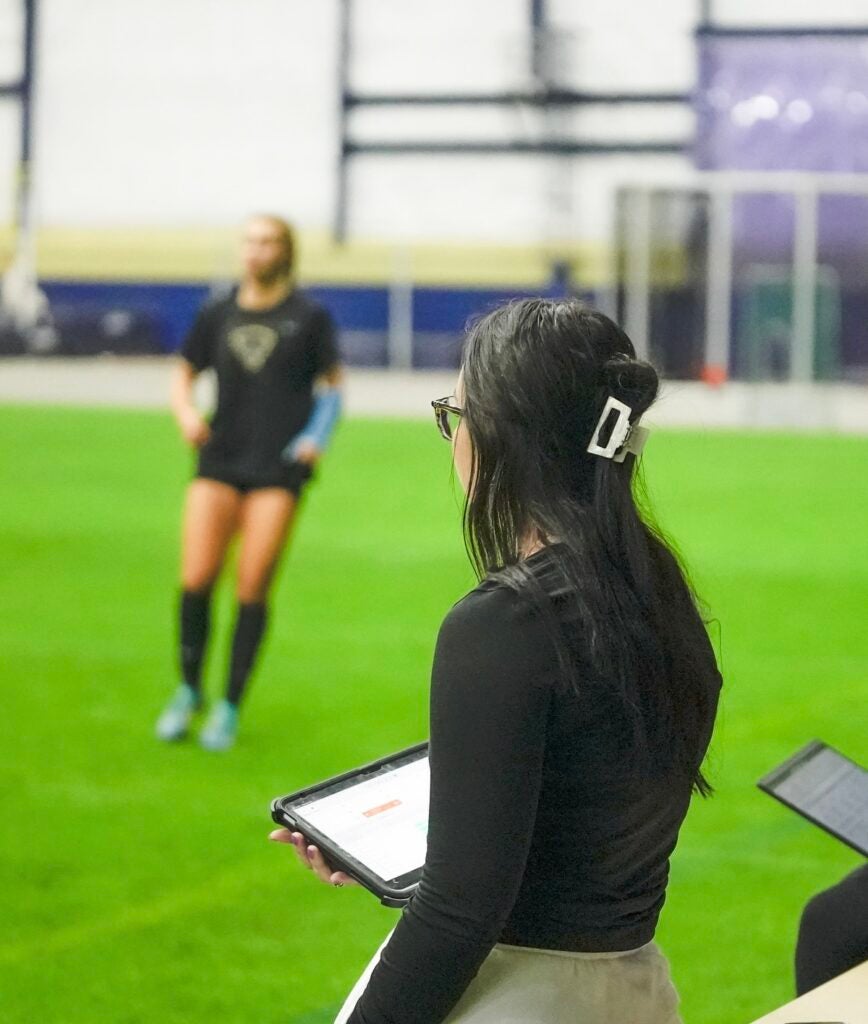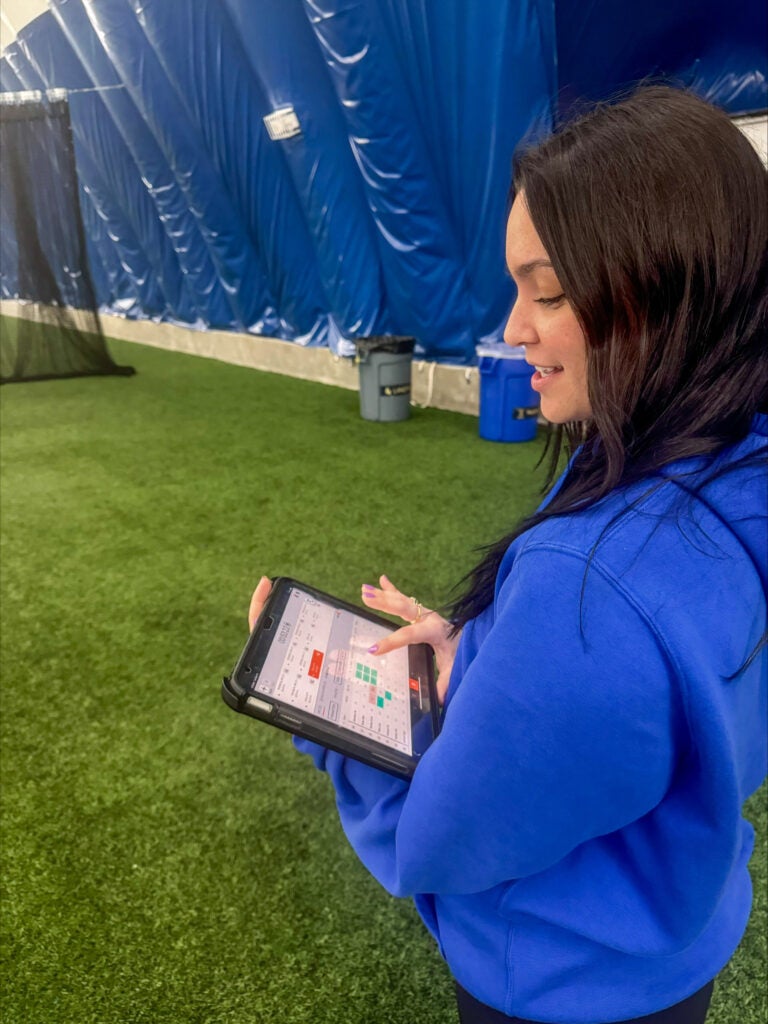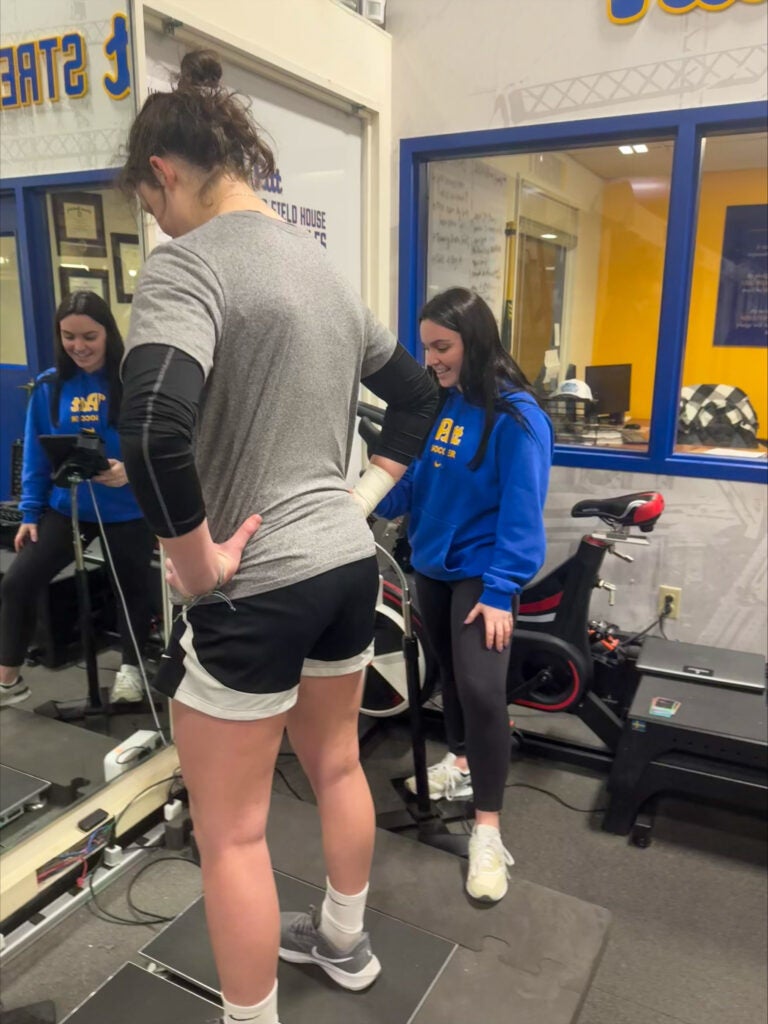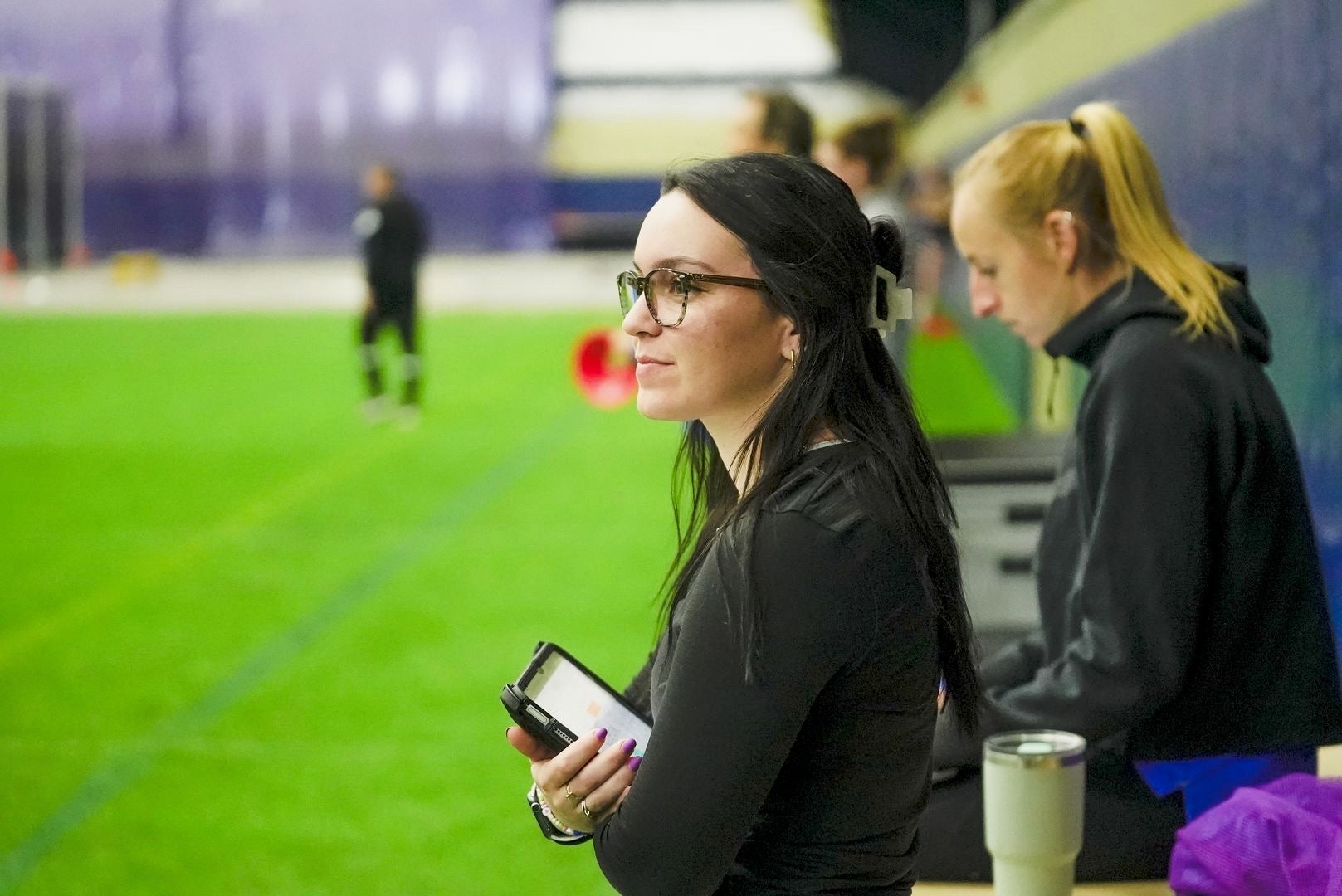Anna Michalski is in her second term of Pitt’s one-year Master of Science in Sports Science program. The hands-on program is designed for students to gain didactic and real-world experience in sports data collection and technology to improve athletic performance and minimize injury.
For all Sports Science students, a one-year internship is required, where they are assigned to a designated sports team or organization in the Pittsburgh area. This internship enables students to directly apply their academic knowledge to the performance of actively competing athletes. Michalski’s internship is with Pitt Women’s Soccer, where she has had the opportunity to work with performance technology and the players, giving her unique advantages as she pursues her professional career.
Read further to learn more about Michalski’s experience in the Sports Science program and her work with Pitt Women’s Soccer.

Choosing Sports Science at Pitt
After receiving my Bachelor of Science in Kinesiology from the University of Central Florida, I chose Pitt’s Sports Science program because it immediately aligned with my career path. I wanted to work with a team, and Pitt Sports Science would provide me with more opportunities than any other university. In particular, Pitt offered an internship program where you are placed and immersed within a team for one year. In a field that is mostly hands-on, getting to work regularly with a specific team gives you real experience of what this career could look like. You’re placed within a team’s high-performance unit as a sports scientist, which gives you the opportunity to collect data and share outputs with the team.
Experience in the Program
The hands-on experience offered in the Sports Science program is a game-changer. We get to understand how the technology runs behind-the-scenes and use that information as it translates in real-time. One example is when we have “return to play” athletes that are in the process of rehabbing to get back to playing. When we understand all the metrics and outputs through the technical devices, we create a “return to play” plan for that athlete with specific goals to meet. Once we have our goals, we can actively monitor that athlete during training. The constant data updates tells us when the athlete meets their goal.
We get to apply that understanding in real-life scenarios to make informed decisions. I get the privilege to work in the Petersen Sports Complex (PSC) and it is like no other! From the field to the Sports Science station to the meeting area, we have access to all we need in one space. The station includes a desk with our console laptop and the docks that hold all the individual player’s data devices. We use this every day when the women are getting ready to head out to training.

For example, the players come to the dock station to grab the device with their name on it and put it in their Catapult sports bras. As soon as they return from training, they put their devices back into those docks so that I can connect them to the console to download all the data from them. The Catapult devices monitor their training loads, distance and velocities, which we then upload to our database. The Catapult technology helps the performance staff to understand how their athletes are adapting to the session and whether they can increase or decrease the intensity of training. This becomes important during competition season where planning intensity around games is so important.

Internship with Pitt Women’s Soccer
Working with the soccer team has been such a blast. When applying for the Sports Science program, we were given a list of teams that offer internship placements and asked to rank our top five preferences. We then did an interview with each team to find our best fit. I was fortunate enough to get my top pick and work with one of the best women’s soccer teams in the nation. Being a former soccer player myself, having the opportunity to be in a familiar environment has helped make the transition from athlete to staff very easy. I get to be involved with a sport I love and provide information to the coaches that will help drive team decisions.
I work with the team five to six days a week and start my day off in class, then go to soccer practice and work on the field running Catapult for a couple of hours.

On days that there is weightlifting, I test their countermovement jump on Hawkin Force Plates. These are used weekly where each athlete does a counter movement jump. They do this prior to lifting and we receive many metrics from this. We can measure all phases of a force curve and the height of their jumps. This is a good way that we can understand the individual fatigue from each athlete.
Another technology we implement, the Senaptec station, is a cognitive and visual training tool. It can help assess reaction time, target capture, near-far quickness and much more. This can be used along with normative data to compare an athlete to their previous tests or to different sports, levels or positions. The Senaptec station has been the most interesting piece of equipment as it helps you understand how the human sensory system can translate into skills and decision making.
I love the soccer team’s dynamic and how welcoming they are. I also love getting to learn from fellow Sports Science students in our weekly cohort meetings and working closely with interns from other teams to share ideas and learn from each other’s experiences.
After Graduation
After I graduate, I hope to move into the private sector to work in a customer development role within a sports technology company. I would like to help teams make the most out of their technology tools.
The Pitt Sports Science program is a good fit for someone who is ready to jump right in and loves to learn as you go. You must be comfortable being uncomfortable at times, as you will not have all the answers and you will not be an expert right away. However, the most important thing is having a passion for learning and the athletes you get to work with.
